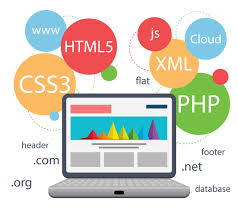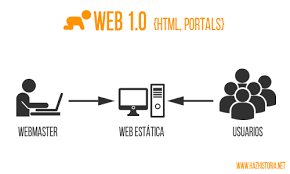http://www.digitales-blog.com/blog/web-30-the-current-web-revolution
web 3.0
It is the “executable” phrase of Word Wide Web with dynamic applications, interactive services, and “machine-to-machine” interaction. Web 3.0 is a semantic web which refers to the future. In Web 3.0, computers can interpret information like humans and intelligently generate and distribute useful content tailored to the needs of users. One example of Web 3.0 is , a digital video recorder. Its recording program can search the web and read what it finds to you based on your preferences.
“machine-to-machine” interaction. Web 3.0 is a semantic web which refers to the future. In Web 3.0, computers can interpret information like humans and intelligently generate and distribute useful content tailored to the needs of users. One example of Web 3.0 is , a digital video recorder. Its recording program can search the web and read what it finds to you based on your preferences.
Web 3.0 describes the third generation of the Internet, which we are currently experiencing the early stages of.
It’s all about the “Intelligent web” and has been described as one of the biggest revolutions of our time.
Web 3.0 is an extension of Web 2.0.
You may think “Web 3.0? I’ve never heard of it”well you actually have.
We interact with Web 3.0 technologies everyday, primarily through our smartphones.
Things like cloud computing, retina displays and 4G Internet, which have drastically improved our web experience, are all products of Web 3.0.
Not only is Web 3.0 changing our online experience, it’s also changing what we
value in our lives.
Web 2.0

Web 2.0
Since 2004 the term “Web 2.0” has been used to describe the social web. This new title wasn’t used to describe a change in specific web technology, but instead a change in the way websites were created and used. During the rise of Web 2.0 social media became an essential tool for every single individual with most web users beginning to interact and collaborate in virtual communities. This gave rise to the popularity of websites that emphasized user generated content through social media like Facebook and Twitter or crowd sourcing websites such as Wikipedia and Trip Advisory. Now, because of this user engagement, the web has become more open, more connected and more intelligent, leading us to our current state.
Web 1.0
It is the “readable” phrase of the World Wide Web with flat data. In Web 1.0, there is only limited interaction between sites and web users. Web 1.0 is simply an information portal where users passively receive information without being given the opportunity to post reviews, comments, and feedback.
It’s the first iteration of web 1.0, which, according to Berners-Lee, is the “Read-only web.” In other words, the early web allowed us to search for information and read it.
There was very little in the way of user interaction or content generation.
The first iteration of the web represents the web 1.0, which, according to Berners-Lee, is the “Read-only web.” This was what most website owners wanted.
They needed a website to make their information available to anyone at anytime.
I call this “Brick-and-mortar thinking applied to the web.” The web as a whole hasn’t moved much beyond this stage.
Shopping cart applications, which most commerce sites use in some form, fall under the category of web 1.0.
It removes the geographical restrictions associated with brick-and-mortar businesses.
